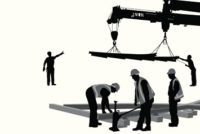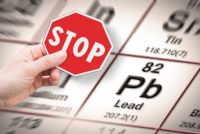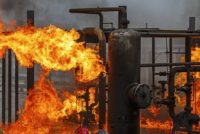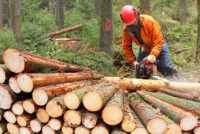Category: Special Topics in Safety Management
Safety is a process, and as such, needs to be managed. This section offers resources to create a viable safety program, sell it to senior management, train supervisors and employees in using it, and then track and report your progress. Look also for ways to advance your own skills in these areas, both for your current job, and those that follow.
Free Special Report: 50 Tips for More Effective Safety Training
OSHA reports that Recommended Practices for Safety and Health Programs is one of its most popular guidance publications. The agency originally published this document in 1988 and issued the first update in October 2016. In that revision, OSHA stated that much had changed over the preceding 28 years in the nature of work, conditions in […]
OSHA’s proposed amendments to its Cranes and Derricks in Construction: Operator Qualification standard (May 21, 2018, Federal Register (FR)) contains what some employers seem to be interpreting as two contradictory positions. The proposal adds a requirement that employers must conduct evaluations to ensure that the equipment operator possesses “the skills, knowledge, and judgment necessary to […]
After years of sputtering progress, the Department of Homeland Security’s (DHS) Chemical Facility Anti-Terrorism Standards (CFATS) program is beginning to resemble a well-run, if not yet mature, government-industry undertaking.
Our experts at Safety.BLR.com were recently asked, “What industries does OSHA consider as Special Industries?” Here is what they had to say.
From an employee’s acceptance of a job through the prehire process and into day 1 at the organization, your company’s onboarding practices set the tone for the success—or failure—to come. Is your onboarding program boosting your safety culture, or is it hindering it? Read on for some safety culture onboarding best practices in a Q&A […]
Nearly 8 years after the Association of American Railroads (AAR) challenged provisions of OSHA’s Cranes and Derricks in Construction rule (August 9, 2010, Federal Register (FR)), the Agency has issued a formal proposal to address the AAR’s concerns. (The AAR’s petition remains with the U.S. Court of Appeals for the D.C. Circuit, but the two […]
Carbon monoxide (CO) in quantities that exceed OSHA’s permissible exposure limit (PEL) of 50 parts per million (ppm) as an 8-hour time-weighted average (29 CFR 1910.1000 Table Z-1) can occur in indoor work areas where fuel with a carbon content (e.g., natural gas, gasoline, kerosene, oil, propane, coal, wood, or plastic) is incompletely combusted. One […]
Worker safety advocates, scientists, and some state OSHA authorities have been contending for years that OSHA’s permissible exposure levels (PELs) for lead in the workplace are inadequate to protect workers from the multiple adverse health effects associated with the metal.
Explosions and fires at oil refineries and chemical facilities are far more likely to occur during equipment start-ups and shutdowns, notes the U.S. Chemical Safety and Hazard Investigation Board (CSB) in a recent Safety Digest. Workers are typically the first line of victims when such incidents occur. In the Digest, the CSB describes three start-up/shutdown […]
Workplace safety is an important goal in any industry, but as every EHS pro knows, promoting and achieving safety is more challenging in some industries than in others. What are the most dangerous jobs in the United States?










